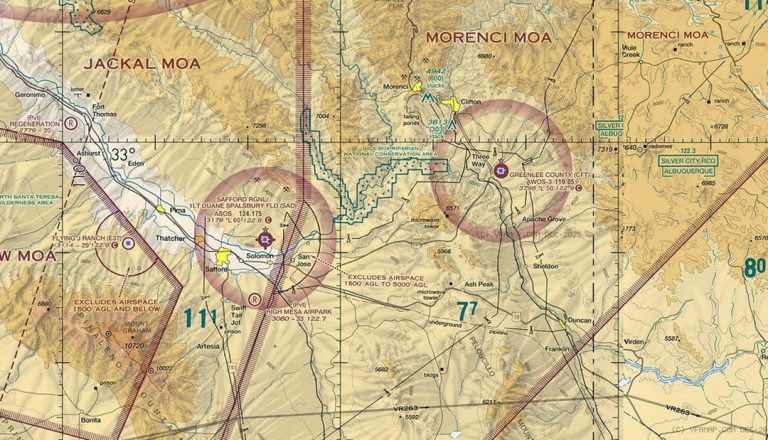The Laws of Drone Flight Around the World – Illustration
Over the years, drones have become more and more confusing, and the number and diversity of regulations have become more and more complex. Surfshark collected data from countries worldwide and produced these excellent effect pictures to help show where they can still be legally lifted off. Surfshark is a VPN service, and for some reason, it decided to conduct the most comprehensive study of the global drone flight law.
The company collected data on drone-related regulations in 210 countries/regions to understand how to use UAV Coach, RAND Corporation, UAV Systems International ) And the Library of Congress (the Library of Congress) to monitor drones.
The company found that the regulations of each country/region can be classified into one of the following seven categories: Complete prohibition of effective bans and applicable restrictions (for example, drone registration or permits, additional observers required, no commercial use, etc.) .)
In-line flight experimental line of sight (an experiment that allows drones to fly beyond the line of sight) Unlimited (when taking off from private property and airports, the altitude is less than 500 feet / 150 meters, and any heavy lift drone weighing more than 250 grams is not allowed) Not You can view the amount of raw data used in Surfshark's special report here.
The infographic shows that according to the October 2020 law, each country has been assigned a status. Below is a complete view of the world map, and below is a detailed inspection view of the various continents.
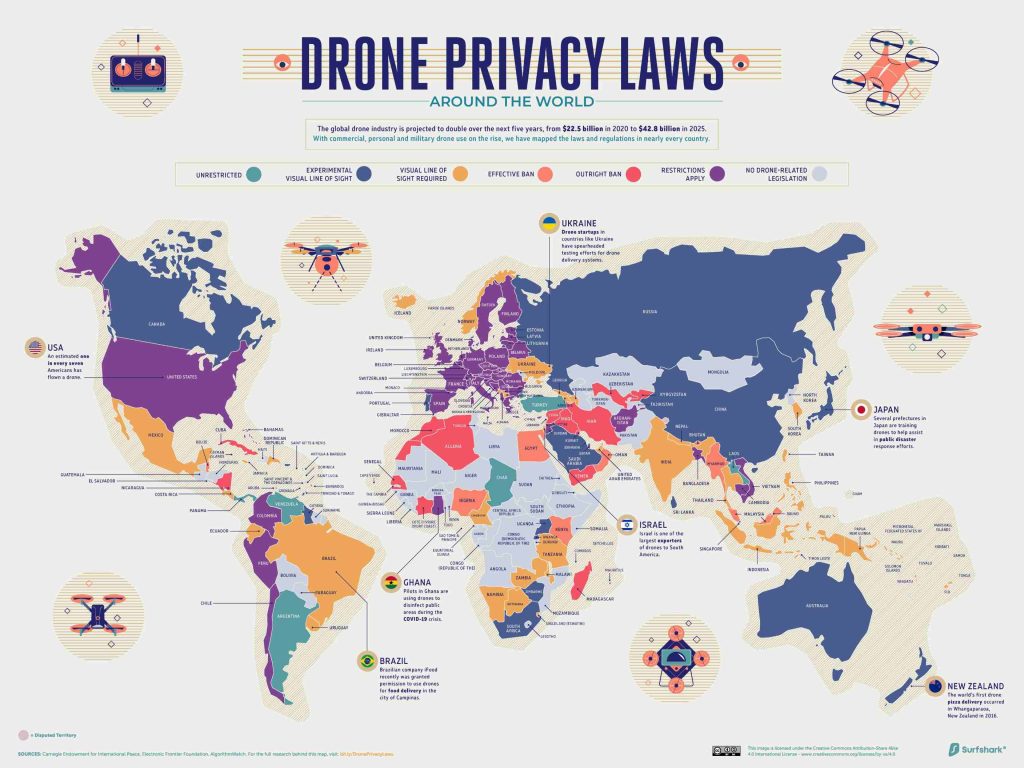
Source from surfshark.com
Europe According to Surfshark data, Europe has one of the loosest drone regulations of all. "Although many countries/regions on the African continent have developed some drone regulations restricting the use of drones, these regulations usually come in the form of simple operating guidelines"
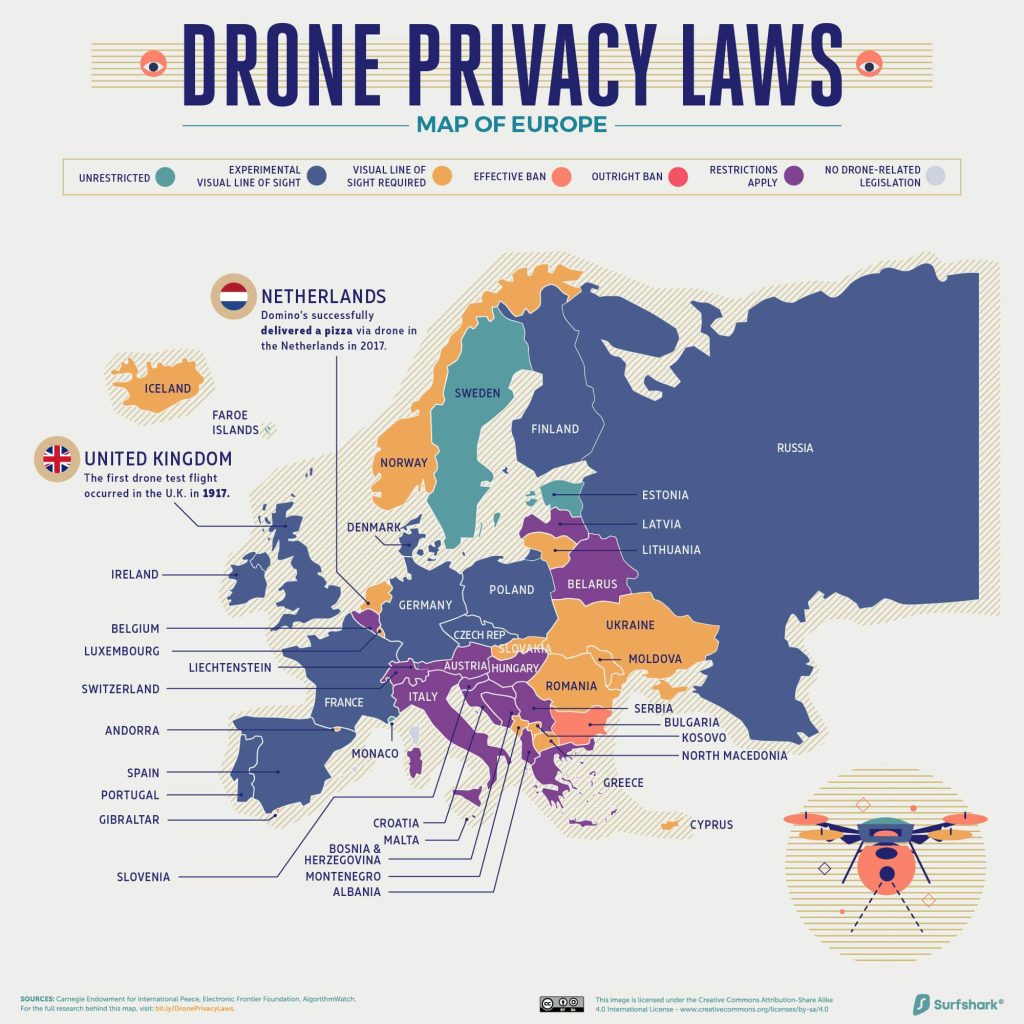
North America In terms of sightlines, North America also has some looser regulations. "Although most countries in the world require drone pilots to be able to see the drone at all times, 33% of countries in North America allow experimental drones to fly out of sight," Surfshark found. "It has the largest share of all continents, well above the global average of 22%." Surfshark believes that this may be because many technology companies are studying the use of drones as part of the delivery infrastructure.
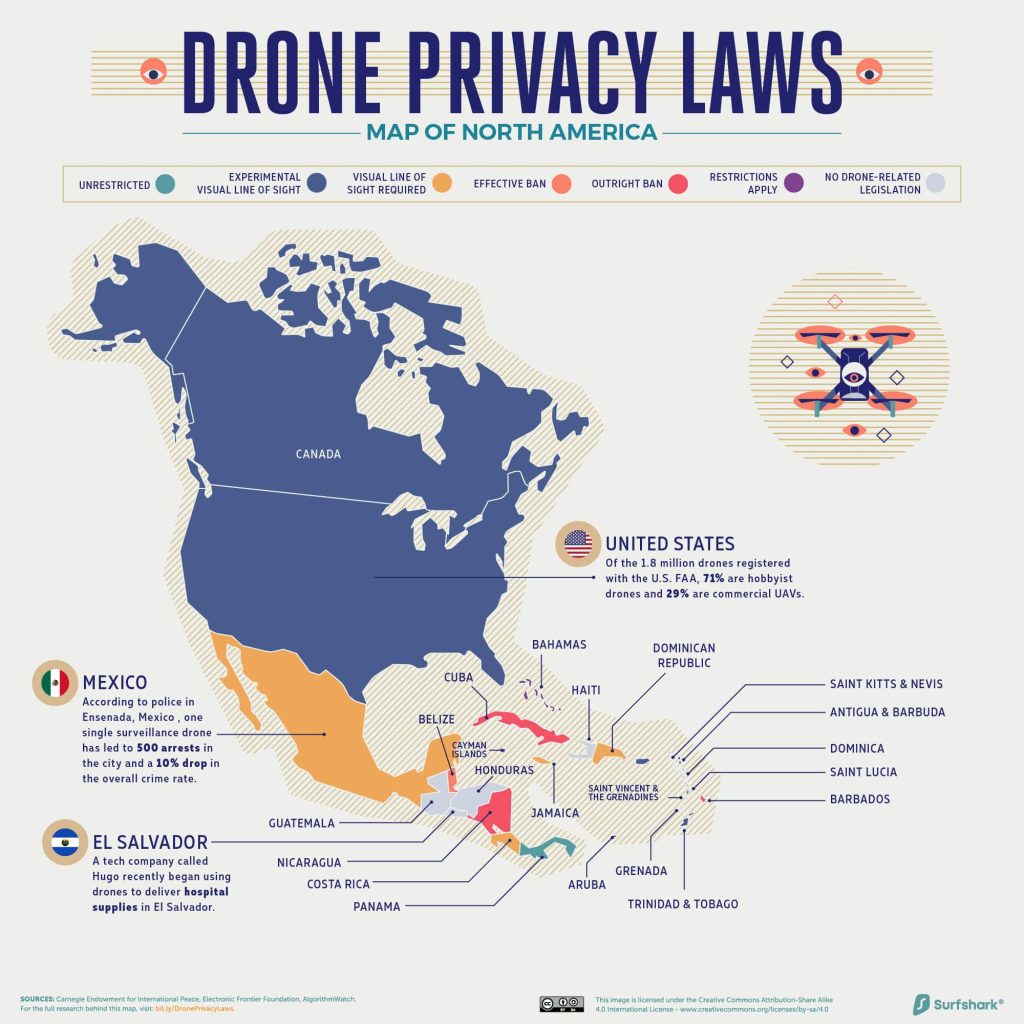
South America, no country in South America, completely bans drones, although most of them have laws that require drones to be kept within sight. Some countries have also formulated specific rules for safety and environmental protection. For example, except for pre-approved scientific use cases, drones are prohibited on the Galapagos Islands.
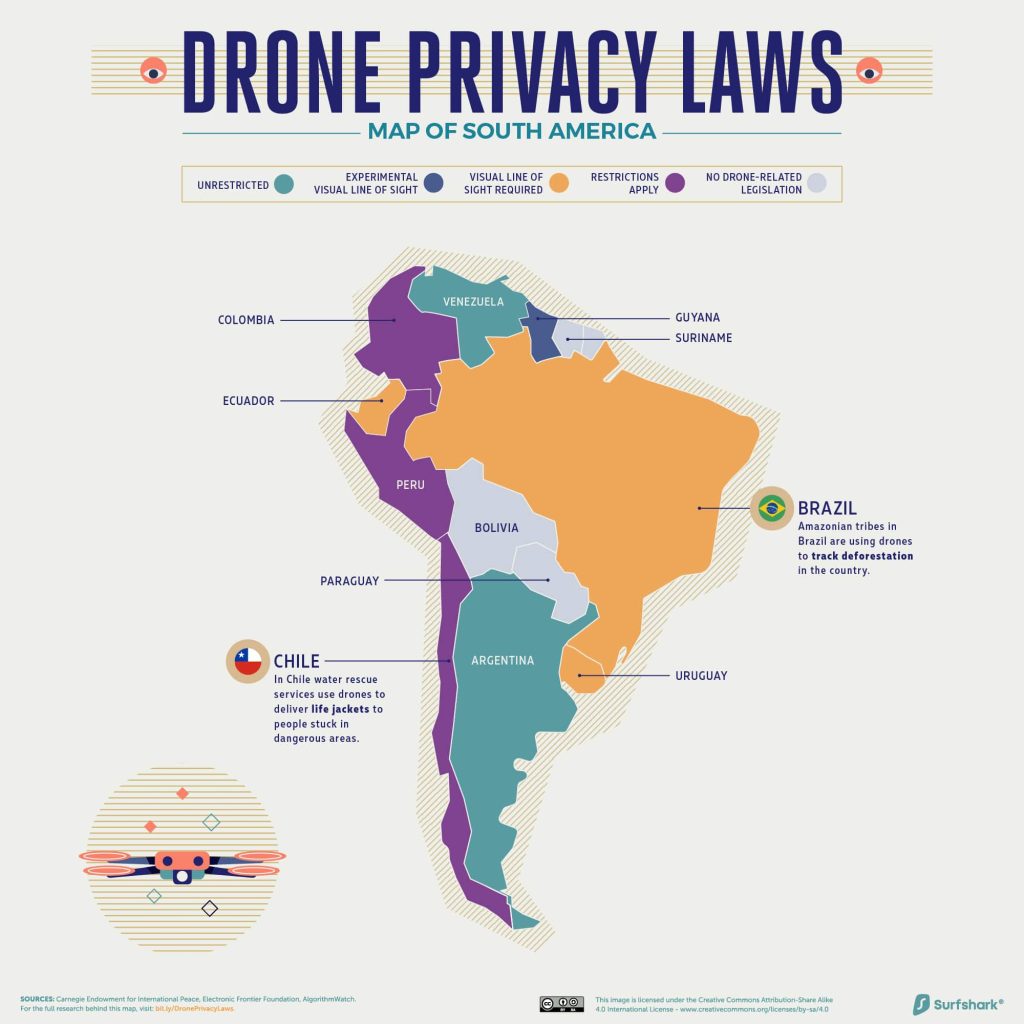
The Middle East and Central Asia Surfshark found that 21% of the countries in the region ban drones entirely, accounting for 11% of the world's share and the second-largest share of all continents. The company reported: "However, a few countries have begun to allow drones to fly out of sight."
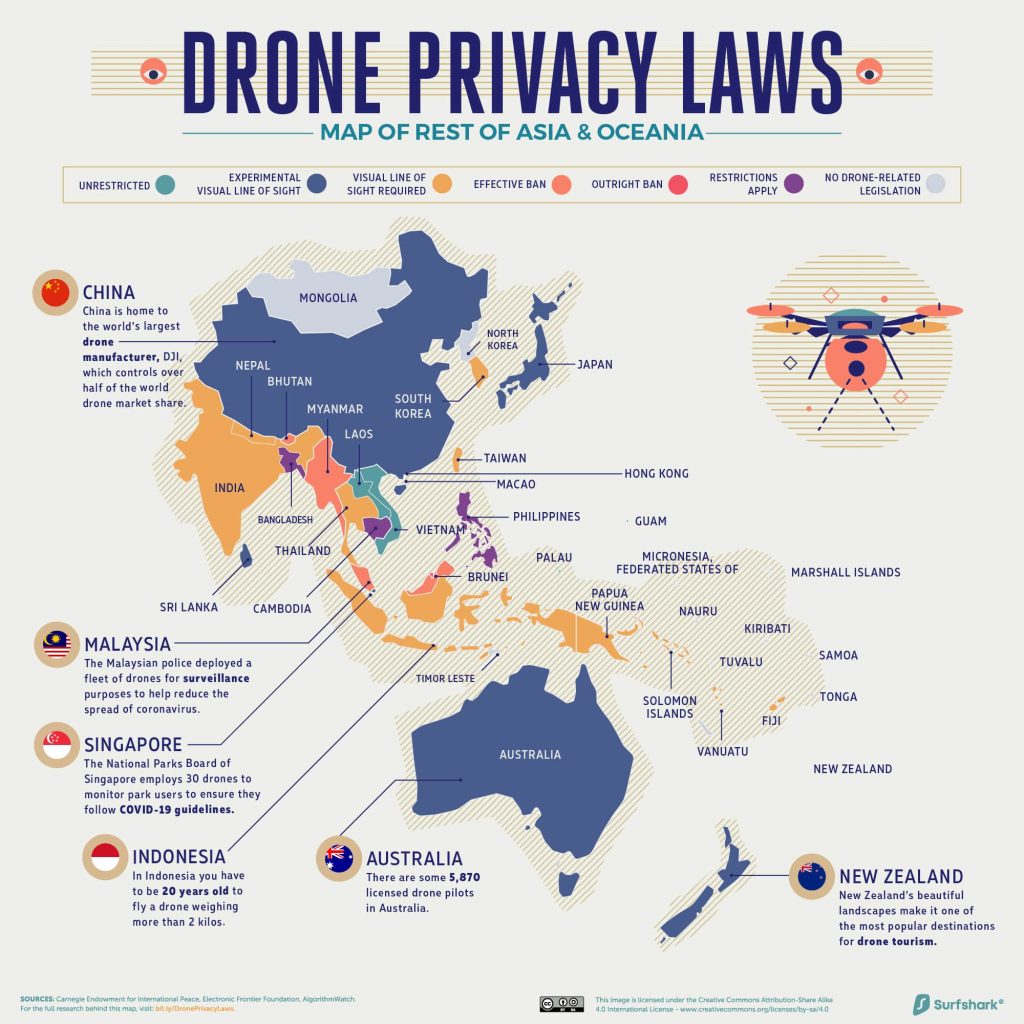
Rest of Asia and Oceania Most countries/regions in Oceania do not have regulations related to drones. Most are allowed to fly among those who do this as long as the drone is within sight. No country in the region has completely banned the use of drones.
Africa More than half of the countries in this region have no regulations related to drones at all. However, 21% of these countries ban entirely their use, which is the largest share of all continents. Surfshark reports: "Another 13% of countries have effectively banned the technology, which is the second-largest share of all continents." "For example, in Egypt, drones are technically legal with permission from the Civil Aviation Authority. Yes, but it's difficult to get a license." However, there are signs of innovation on the African continent. "For example, in Ghana and Rwanda, drones can fly over the line of sight to deliver medical supplies to remote villages. Other African countries that allow drones to fly over the line of sight include Uganda and Zimbabwe."
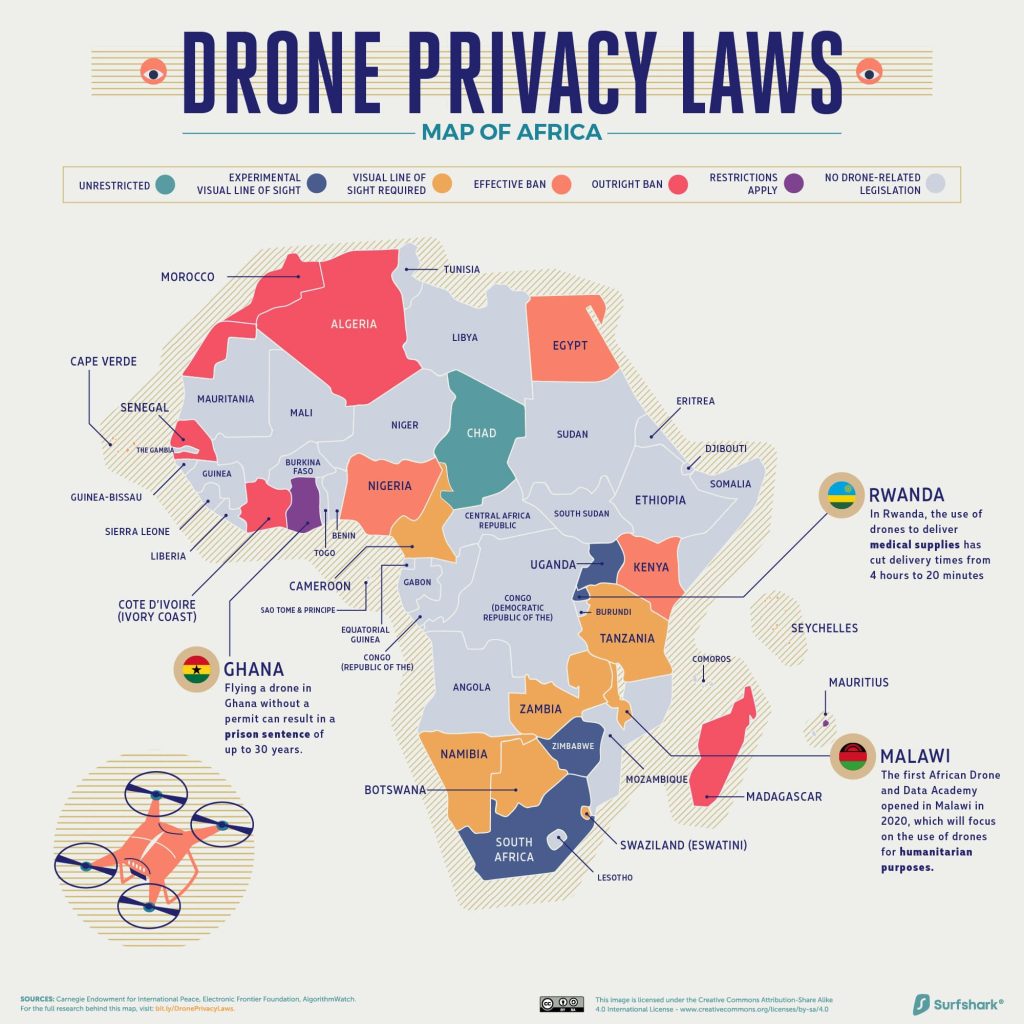
Conclusion This is useful for those looking for a simple and understandable method to determine the laws of different regions, but it is not the end of the analysis. Surfshark also found exciting data about the future of drone flight. The company reported: "The demand for drone technology shows no signs of slowing down." "According to the World Intellectual Property Organization, the number of patents for drone technology is overgrowing, only increasing from 7,076 in 2017 to 2018. There were 9,485 cases in the year, an increase of 34%." The information on these infographics may change continuously with the adjustment of regulations in the next few years. However, the work Surfshark is doing here is one of the easiest ways to clarify the global drone flight rules.



